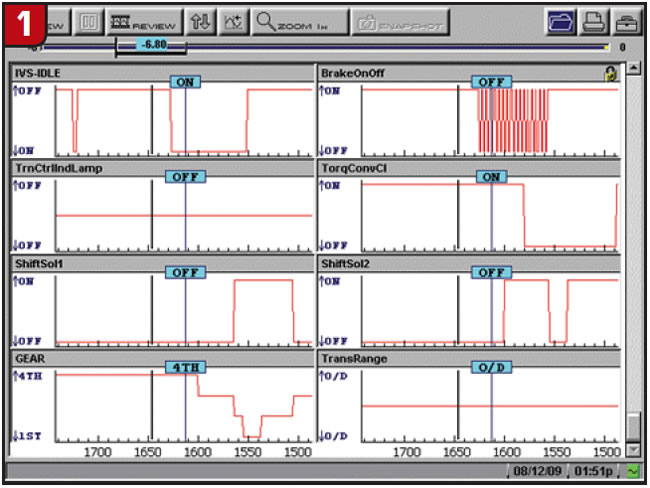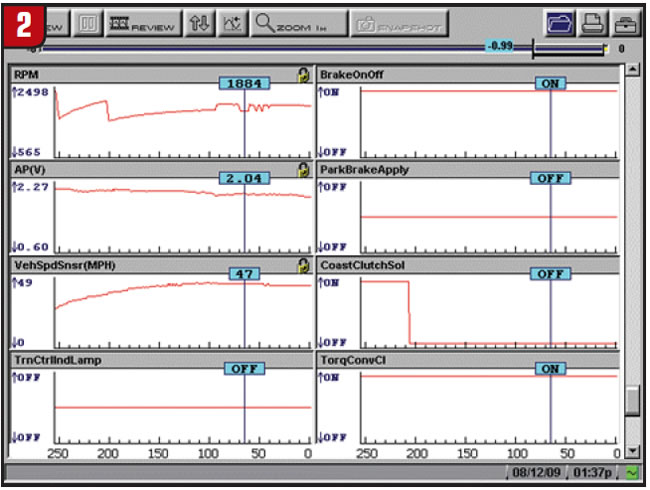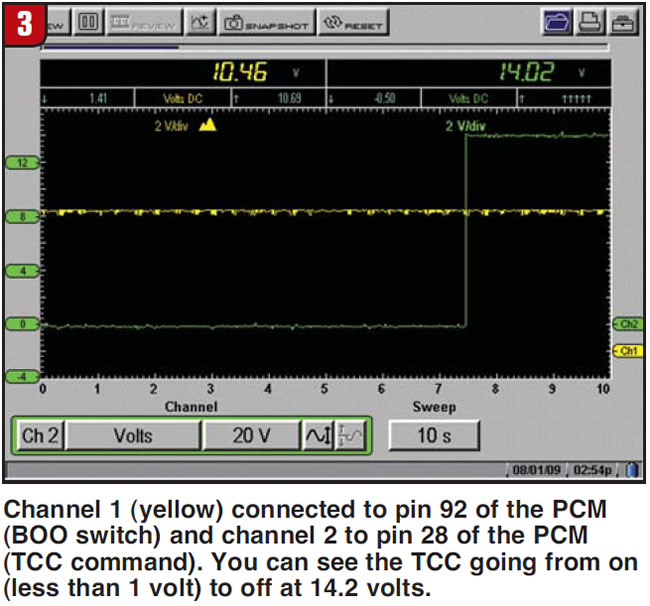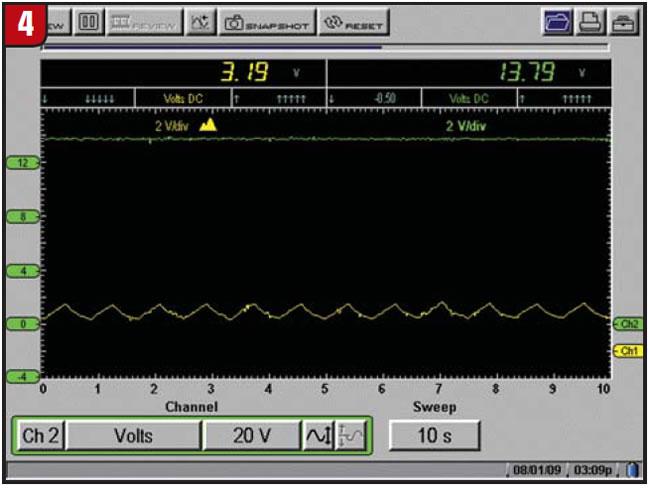
Shift Pointers
- Subject: Transmission goes in and out of lockup at steady cruise speed.
- Unit: E4OD
- Vehicle Application: 1995 Ford Super Duty truck
- Essential Reading: Diagnostician
- Authors: Jesse Zacarias & Roy Delfran
They say that sometimes you can’t see the forest for the trees. That statement can be so true when you’re diagnosing an electrical problem. The obvious is not always so clear when it is cluttered with other information that you are looking at.
We had a 1995 Ford Super Duty with a 7.3-liter diesel engine and E4OD transmission that had no trouble codes but appeared to be going in and out of TCC lockup at steady cruise speed. If you accelerated hard when this was going on the TCC would engage properly until you came back to cruising speed and there was no more load on the engine. This was a commercial truck that had a heavy air compressor in the back and was always towing a big trailer, so the problem was very noticeable as the truck was being driven.
We decided to drive the vehicle with the scan tool connected, take a movie when the problem appeared and then come back to the shop to analyze the data. The first abnormal thing we saw was that the brake-switch parameter showed the brake to be on when it was off and off when it was on and that it also oscillated off and on when the brake was held applied (Figure 1). We figured this was a bug and planned to report it later.

We also noticed that the TCC parameter in the scan tool did not change the state from on to off when we felt the problem and that engine speed fluctuated up and down by about 200 rpm (Figure 2).

To see whether the PCM was commanding the TCC off and on, we back-probed the PCM at pin 28 with channel 2; this is where the PCM grounds the TCC solenoid. At the same time we decided to back-probe pin 92, which is the input to PCM brake on and off (BOO) switch, with channel 1 because we had seen some issues with the brake data. When we road-tested the vehicle we could see with the DVOM that the PCM was commanding the TCC off and on when the problem was present. We also noticed about 10.5 volts at the brake input (pin 92) of the PCM when the brake was not applied (Figure 3).

However, when we applied the brake, the voltage on channel 1 would drop to about 3 and we could see the same oscillation in the voltage we saw at the brake parameter (Figure 4).

Why the presence of this voltage when the brake was not applied, and why the oscillation? Why was the PCM commanding the TCC off and on? Why did the TCC work OK when we accelerated again when this was happening, and why the problem only in cruising condition with no load on the engine?
We started by doing the basics – checking the charging system, checking for proper voltages and good grounds. We checked for voltage at the brake switch, but we noticed there was no voltage present on the fuse side but there was about 9 volts on the other side (puzzled look and a little head scratching). We checked the brake-switch fuse and found that it was blown. When we installed a new fuse the flashers started to work. Immediately we saw the forest (the obvious).
The whole problem was a blown brake-switch fuse in combination with a flasher switch that was left on. That explains why the brake parameter showed applied when it was not: the presence of voltage on the circuit, provided by the multi-function switch (controls the hazard lights and turn signals). The brake parameter showed off with the brakes applied because there was not enough current to turn on the brake lights and send voltage to the PCM. It also explains the oscillation of the brake parameter when the brake was applied, because of the hazard-light flasher. The presence of the voltage also would lead the PCM to sense that the brake was applied, but the PCM is programmed to ignore this signal when the vehicle is under acceleration; that is why it would reapply the TCC when we accelerated. The data parameter never showed the TCC being disengaged, because when the TCC is released because of the brake being applied that parameter never changes; that is how the PCM is programmed.
These vehicles are known for having their emergency flashers on when the crew is working at the side of the road, and with the added lights of the trailer there seemed to be too much current for the fuse to handle. It probably blew without the driver noticing and he just got in the truck and left (wonder how long he was driving without brake lights).
Sometimes when you get a few of the trees out of the way you can see the forest.
Channel 1 (yellow) connected to pin 92 of the PCM (BOO switch) and channel 2 to pin 28 of the PCM (TCC command). You can see the TCC going from on (less than 1 volt) to off at 14.2 volts.

Jesse Zacarias is the owner of Elec-Tran Diagnostics in Gilroy, Calif. Roy Delfran is with Snap-on Diagnostics “Ask-a-Tech Web Services” (http://askatech.snapon.com).













